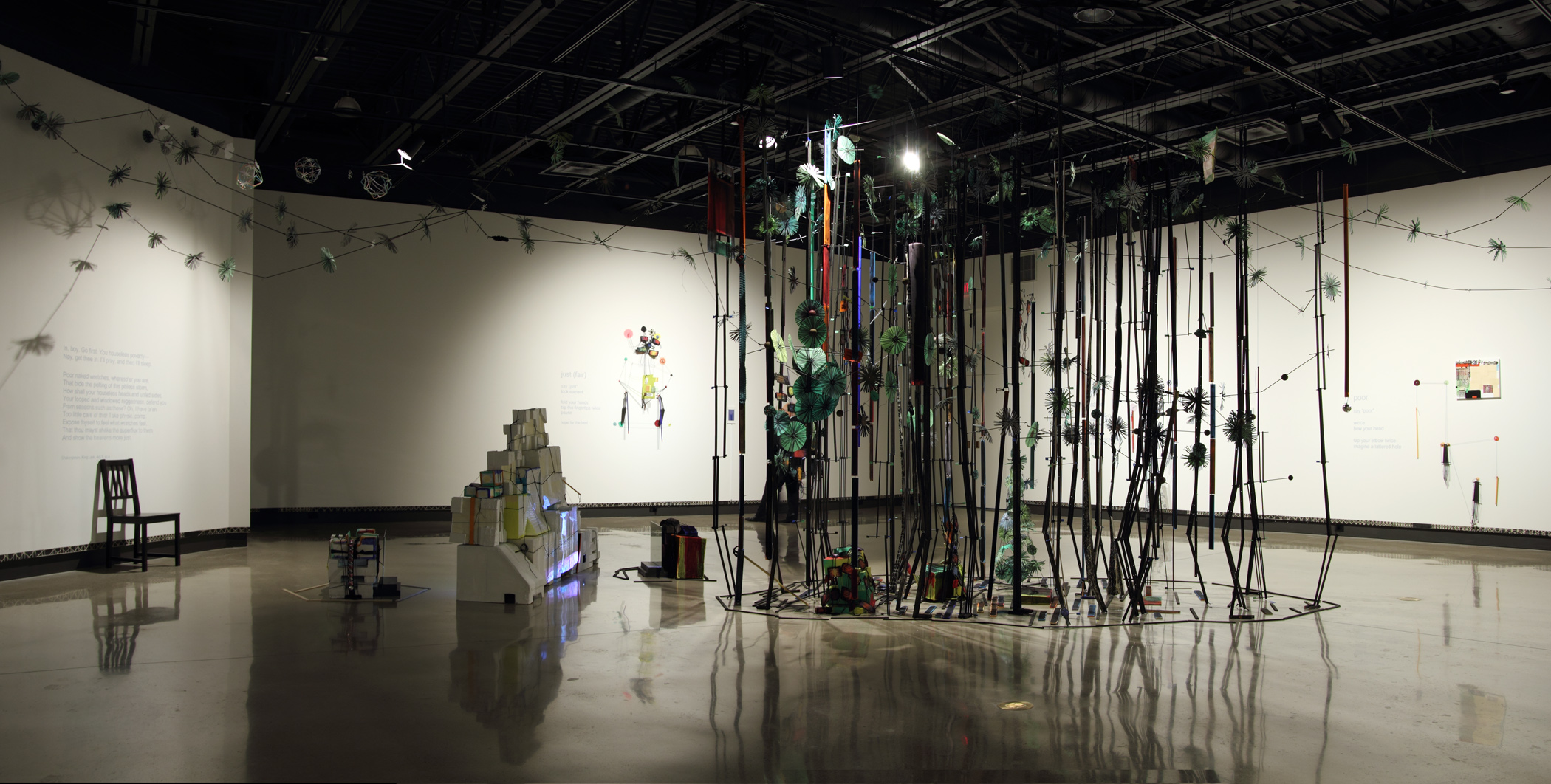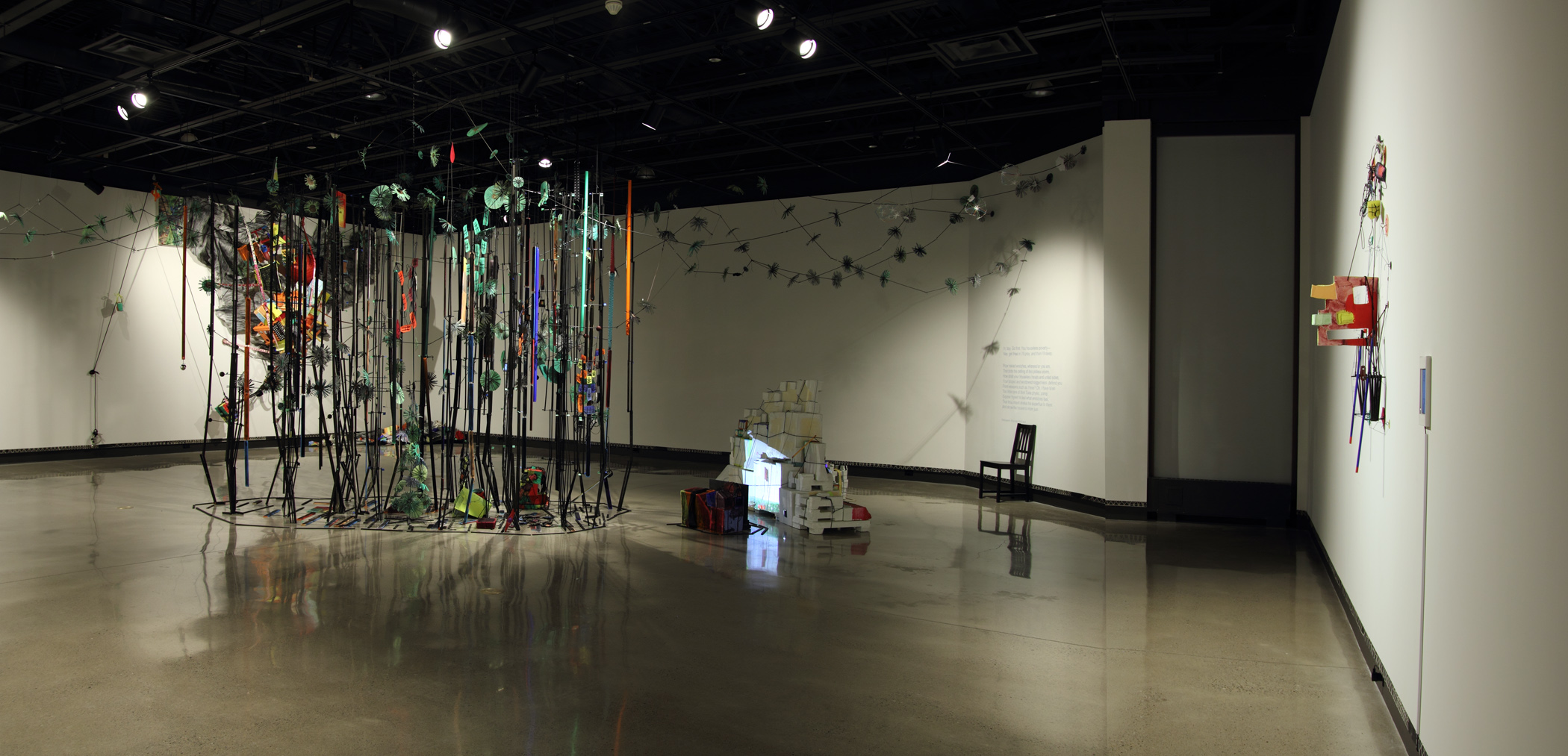Inventing
Hope
November 21 January 10, 2016
"Out of some persistent sense of large-scale ruin, we kept inventing
hope." Don DeLillo, White Noise
documentation stills with Gary Kirkham and
Corinna Den Dekker photos Philip Anisman
Experiment
for a closing was performed on the final day of "Inventing Hope",
a time when the artist, the gallery and the actors were willing to take
final, risky steps. Gary Kirkham and Corinna Den Dekker workshopped a
soliloquy from King Lear in a response to the theatrical and narrative
potential of the exhibition. At the same time the actors were trying to
pull together their interpretation of the work, the deinstallers were
taking the exhibition apart. Mitch Mommaerts filmed them with a live projection
and my camera was in the corner trying to take it all in.
Experiment for a closing video by Mitch Mommaerts
post
performance discussion with artist, actors and audience
filming
of the filming of Experiment for a closing
Gary Kirkham, actor, playwright and Corinna
Den Dekker, actor
Peggy DiCarlo, ASL Interpreter
Barbara Hobot and Jeff Christie, Gallery deinstallers as performers
Mitch Mommaerts, videographer
Iga Janik, exhibition curator Idea / Exchange, Cambridge, Ontario, 2016

This work examines
complex social relationships in a precarious and interconnected world. Inventing
Hope begins with violence - the kick - and moves toward kindness. An abstracted,
seemingly impenetrable forest crosses the gallery, shifting from a dark to
a light palette, punctuated by small gleaming video projections. Wall sculptures,
abstract when at rest, are transformed by viewer engagement into an attempt
to communicate through keyword sign language gestures.
The words we try to learn come from King Lear's speech on the heath, "Poor
naked wretches", where Lear begins to feel for the difficulties of others.
Sign language adds its own layer of poignancy to Shakespeare¹s insights.
The installation investigates the possibility of "teaching" empathy,
not only to the puppet/sculptures but also to ourselves. It considers empathy
as a way to create invisible, sustaining human connections that parallel the
cords that bind, connect and control the sculptural elements. As with instructional
video, perhaps if we practice, we can move forward and become better people

Thanks as always to Philip Anisman and my mother Betty Hague, and to Gordon
Hicks for studio assistance with design/engineering help.
At the Idea Exchange, I would like ot thank Iga Janik the curator, as
well as Jeff Christie, Sarah Faucher, Cherie Fawcett, Greg Hilker, Barb
Hobot and Aiden Ware.
Thank you also to the Canada Council's generous support of this new work.
